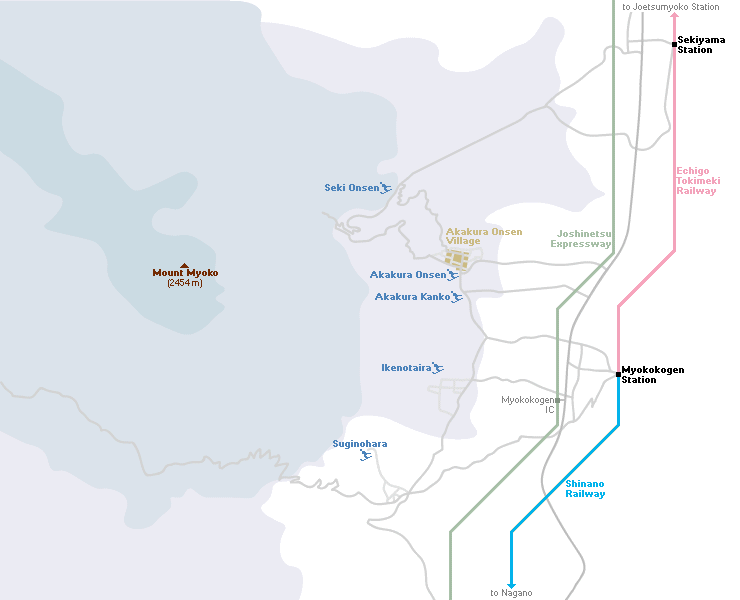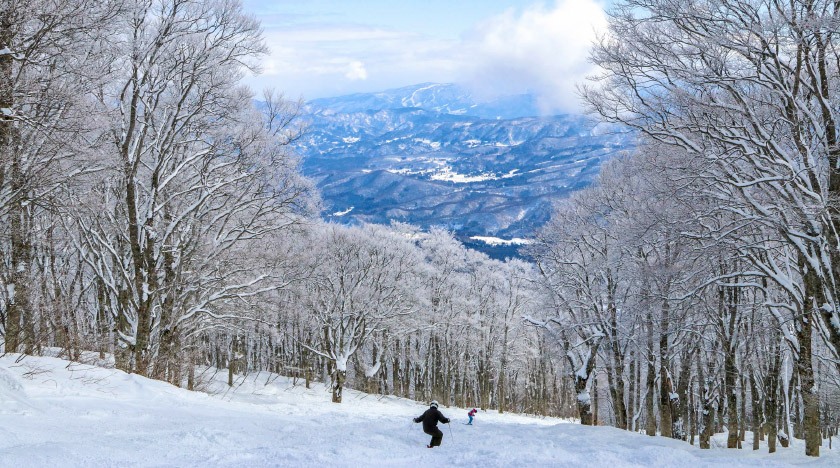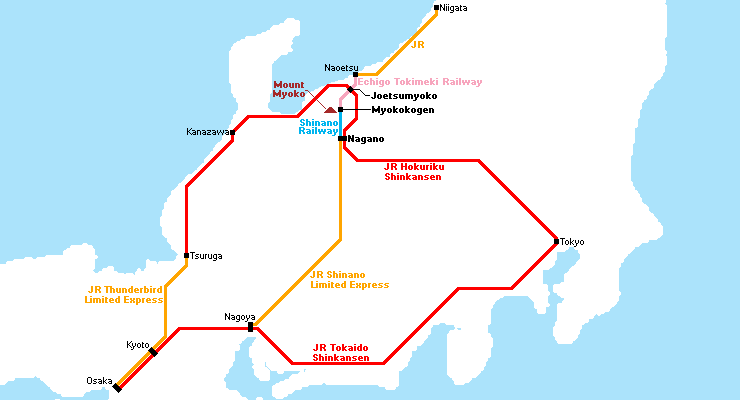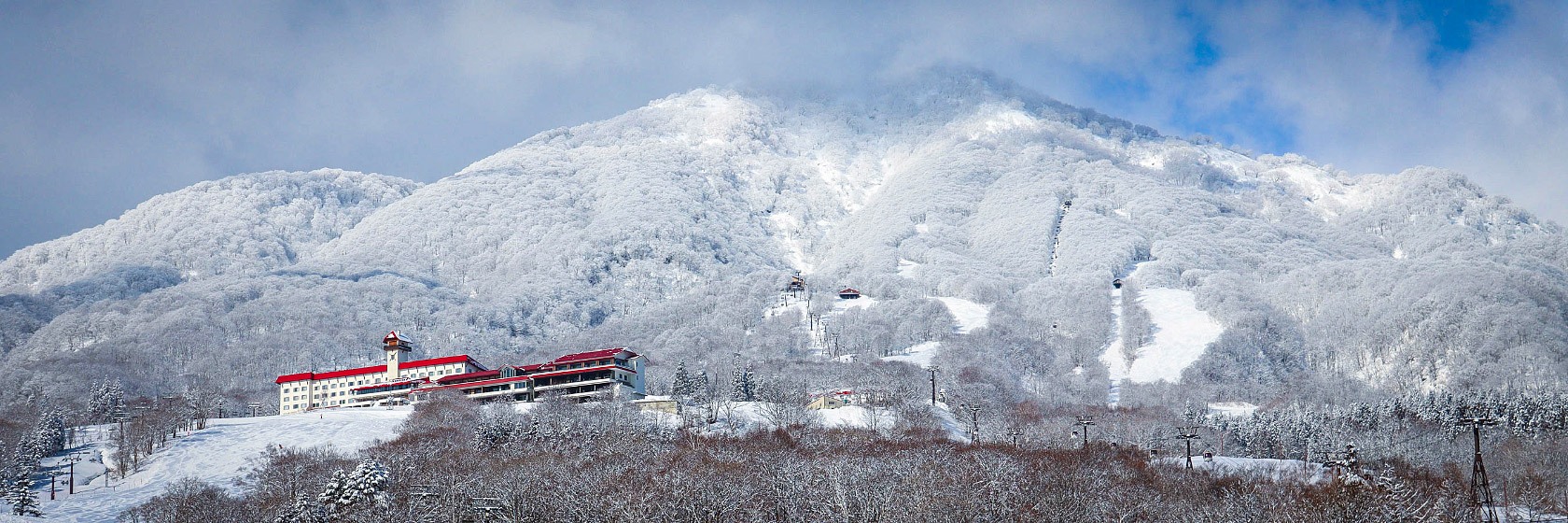Mount Myoko (妙高山, Myōkō-san) is a volcano in western Niigata Prefecture and one of Japan's oldest snow resort areas. Blessed with an incredible 13-16 meters of snowfall on average each winter, the Myoko area is a top destination in the country for deep powder skiing and snowboarding, and offers interesting terrain for riders at all levels to enjoy.

A handful of separate resorts are spread across the mountain's slopes. Of the main resorts, Myoko Akakura is the largest, and is where most of Myoko's accommodation, restaurants, bars and shops can be found. Myoko Suginohara is another standout resort claiming to have one of the country's longest runs at 8.5 kilometers. It is also where a Singaporean real estate investment company plans to build a new luxury resort town over the coming years.
Other Myoko resorts include Ikenotaira with good beginner and intermediate runs, and Seki Onsen, a tiny but well-loved mecca for powder hunters.

Below the ski slopes, onsen are Myoko's next claim to fame. Ranging from secluded outdoor baths to posh modern ski hotels, many hot spring sources and traditional ryokan are scattered around the area - especially around the bases of the major resorts. While the town has developed over the years to accommodate the winter crowds (and growing numbers of foreign visitors), the mom and pop shops, foot baths and old ryokan around each corner still lend Myoko some rural charm.
(Akakura Kanko Resort: December 19, 2025 to May 6, 2026)
(Akakura Onsen: December 13, 2025 to March 29, 2026)
7000 yen (Akakura Onsen)
8500 yen (Both)
6500 yen (Akakura Onsen)
(December 13, 2025 to March 29, 2026)
(December 13, 2025 to March 29, 2026)
(From December 23, 2025)
Getting there and around
How to get to Myoko
Myoko is located close to the Hokuriku Shinkansen. Most visitors to Myoko from eastern Japan will find it easiest to travel via Nagano Station, while Joetsumyoko Station can be the better station to get off when coming from western Japan:

Via Nagano Station (how to get to Nagano)
From most places in eastern Japan, including Tokyo, Myoko is most easily accessible via Nagano City. From Nagano Station, take the Shinano Railway to Myokokogen Station (45 minutes, 850 yen one way, 1 train/hour, not covered by the Japan Rail Pass) from where it is a short taxi or bus ride to the ski resorts.
Via Joetsumyoko Station
From many places in western Japan, e.g. Osaka and Kanazawa, Myoko is more easily accessed via Joetsumyoko Station along the Hokuriku Shinkansen. From Joetsumyoko Station, take the Echigo Tokimeki Railway to Myokokogen Station (35 minute, 790 yen one way, 1 train/hour, not covered by the Japan Rail Pass) from where it is a short taxi or bus ride to the ski resorts.
Getting around
Most ski resorts are located within a 10-15 minute taxi from Myokokogen Station. City buses connect Myokokogen Station every 1-2 hours to the Akakura ski resorts (10-15 minutes, 350-380 yen) and the surroundings of the Iketaira (15 minutes, 280 yen) and Suginohara resorts (15-20 minutes, 480 yen). Seki Onsen is not connected to the other resorts or Myokokogen Station. Instead, Seki Onsen can be reached by bus from Sekiyama Station (25 minutes, 440 yen one way, every 2-3 hours), one station north of Myokokogen Station.

Questions? Ask in our forum.
